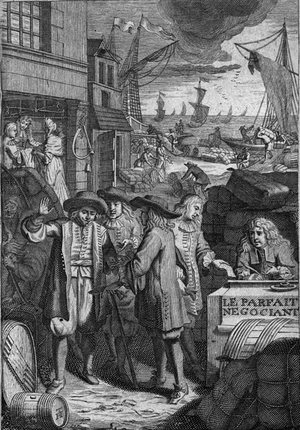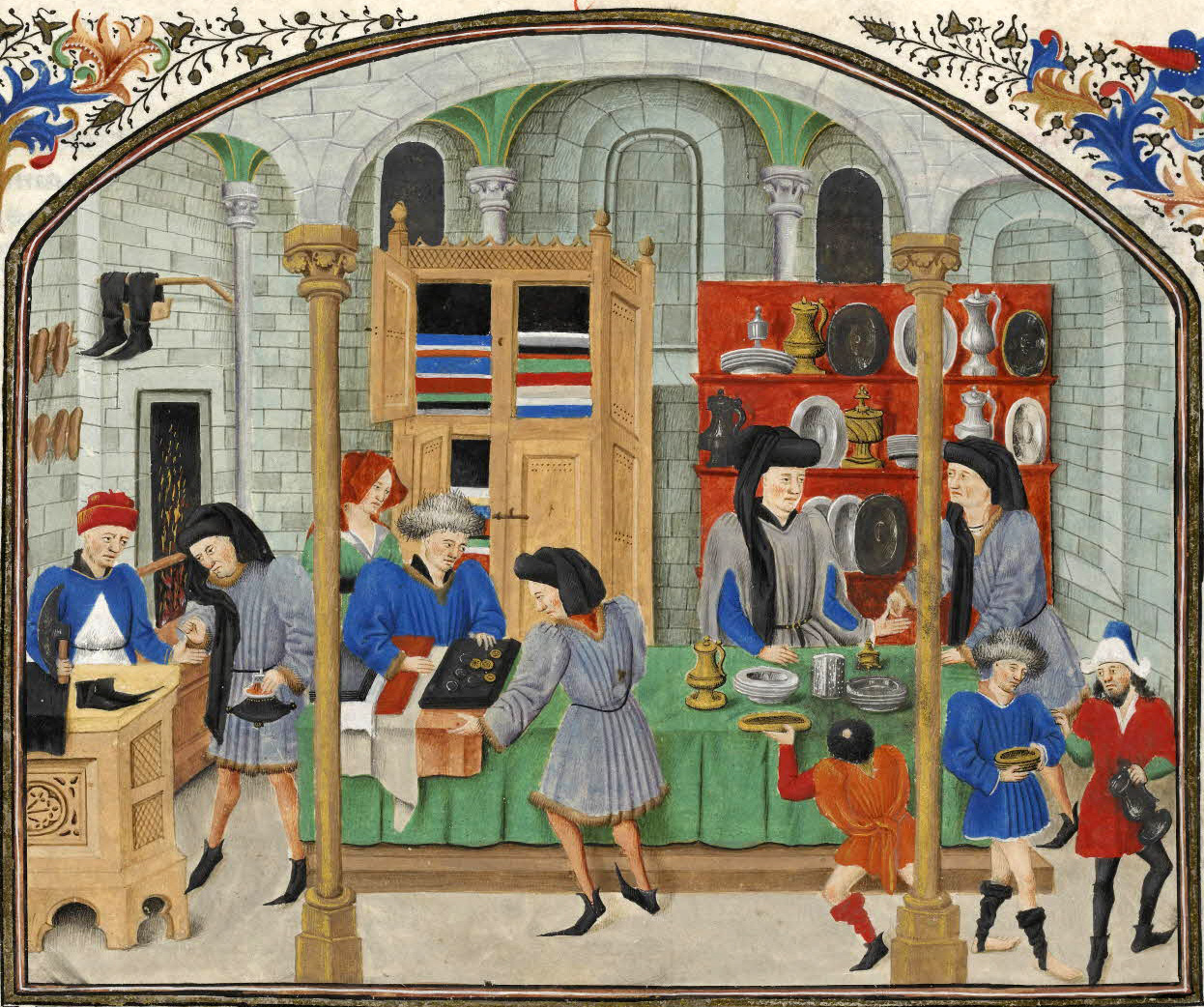How colonialism shaped free trade agreements: the birth of modern international trade (part 1/3)
Todas las versiones de este artículo: [English] [Español] [français]
22 May 2023
How colonialism shaped free trade agreements: the birth of modern international trade (part 1/3)
by bilaterals.org
This three-part series provides a historical perspective on free trade agreements and bilateral investment treaties. It argues that the free-market ideology and the laws that have governed international trade for the past 30 years are rooted in the history of colonialism. Power relations inherited from the colonial era have laid the foundations for modern international trade. A sound assessment of the nature of these trade and investment agreements is essential to addressing the problems they create. The first part explores the development of international trade at the dawn of colonialism. The second one shows how colonial companies and states shaped international trade and investment rules. Finally, the third part examines how current free trade practices reflect their colonial legacy.
Key points:
- The birth of modern international trade was not a natural phenomenon; it was imposed on societies
- Competitive market practices emerged at the international level and found their way to the local level
- Mercantilism helped states and merchants to expand their influence nationally and internationally
The mining town of La Oroya, in Peru, is one of the most polluted places in the world. [1] The surrounding hills are barren, the nearby river is contaminated with toxic substances, almost all children have high levels of lead in their blood and many women have reproductive disorders. [2] Lead and zinc smelting and refining activities carried out at the local mining complex have wreaked havoc on the region for almost a century. But it was the US group Renco, whose subsidiary ran the plant until 2009, that claimed to have been poorly treated by local authorities. It took Peru to arbitration, claiming almost a billion US dollars for breach of the free trade agreement between the United States and the Andean state. [3]
Past and present international trade practices, imposed by former colonial powers-turned-wealthy states, have given transnational corporations the right to operate with impunity in the Global South, leaving local populations in dire straits. Since the 1990s, the World Trade Organisation, bilateral investment treaties and free trade agreements have governed the international trade and investment regime, but geopolitics and corporate interests have actually shaped trade rules for over 500 years before they reached their current form.

The birth of modern international trade
Classical economic theorists claimed that the evolution of markets from the local to the international was gradual and a by-product of the natural human tendency to exchange, barter, trade and seek profit. However, modern social science studies have shown that the local was not in fact the starting point of today’s globalised markets and competition. Competitive markets originated at the international level and found their way to the local. [4] It was not a natural phenomenon, but something that was imposed on societies in the midst of conquests by colonial states and corporations. It was “raid rather than trade.” [5] In this sense, international trade was not a peaceful enterprise, but born out of foreign aggression.
Towards the end of the Middle Ages in Western Europe, local and international trade were very different. There was little interaction between the two. Local markets tended to focus on the basic needs of the local population. They were a sideline activity for farmers and were governed by ‘rules of ethics’ (especially those of the Church) rather than by profit. [6] Ninety per cent of what the rural population consumed was produced within a radius of five kilometres. Only one per cent came from abroad, even though this was the part that generated the most profit. [7]
At the national level, barriers around cities, ports or rivers, where taxes were levied, prevented free trade and hampered the formation of a domestic market, which was what bourgeois merchants wanted. Merchants faced a problem of growth, as the international markets in which they could sell their goods were limited. New conquests brought new opportunities for them, but this meant that new outlets were needed. Conveniently, states were in the midst of a transition. The feudal system was giving way to centralisation, and the bourgeoisie, after years of proletarian, peasant, artisan and women’s revolts, saw an interest in allying itself with emerging states (i.e. the Prince). [8]
Mercantilism emerged as a solution to the challenges faced by both capitalists and states.
The mercantilist system destroyed the local particularisms and the protectionism of the cities. On the one hand, it allowed the Prince to assert his authority over the entire national territory. On the other hand, the unification of the state opened up markets to merchants, as it broke down barriers to trade that were specific to local markets. It also brought the concept of competition to a type of commerce that was essentially non-competitive. The distinctions between the two types of market gradually came to an end. [9]
Centralisation was also necessary to put domestic resources at the service of foreign affairs. In the 17th century, the great powers of England, France and the Netherlands were embroiled in rivalries and conflicts that were very costly for the finances of the states. They needed money and international networks, which merchants and financiers could provide. As a result, the capitalists gained more influence within the state apparatus and were able to shape national economic policy to suit their interests. And in return, the Prince could assert his power internationally. [10]
An alliance between national states and merchants was born.
The development of international trade and the centralisation of the state were essentially two intertwined processes, but by no means ‘natural’. Deliberate state action, driven by capitalists, led to the development of mercantilism. And private capital was a useful tool for unifying the state and expanding the international trade necessary to assert the power of the Prince. The idea that a small capitalist class gradually emerged in society and was instrumental in the rise of international trade is nothing more than a fairy tale. [11] This alliance allowed both states and merchants to benefit from the invasions of new lands that were being carried out.
The second part shows how colonial companies and states shaped international trade and investment rules.
Notas:
[1] “Peru – La Oroya lead pollution”, Pure Earth, https://www.pureearth.org/project/la-oroya-lead-pollution/; Brown, H. and AFP, “Health or survival? The impossible choice facing one Peruvian mining community”, Euronews, 23 November 2022, https://www.euronews.com/green/2022/11/23/health-or-survival-the-impossible-choice-facing-one-peruvian-mining-community
[2] Ministry of Health, Peru and Dirección general de salud ambiental (general directorate for environmental health) – DIGESA, Blood lead study on a selected group of the population of La Oroya, 1999, http://icsidfiles.worldbank.org/icsid/icsidblobs/onlineawards/c3004/c-075_eng.pdf; Weill, C., “Impactos diferenciados en hombres y mujeres de la contaminación ambiental por actividades extractivas en el Perú”, Peritaje ante la Corte Interamericana de Derechos Humanos Caso La Oroya, Forthcoming
[3] “Renco v. Peru (I)”, UNCTAD, https://investmentpolicy.unctad.org/investment-dispute-settlement/cases/417/renco-v-peru-i-; “Renco v. Peru (II)”, UNCTAD, https://investmentpolicy.unctad.org/investment-dispute-settlement/cases/1017/renco-v-peru-ii-
[4] Polanyi, K., The great transformation, Beacon Press Boston, 1944
[5] Adda, J., La mondialisation de l’économie, La Découverte, 2001
[6] Ibid.; Pirenne, H., Histoire économique et sociale du Moyen Age, Presses Universitaires de France, 1963
[7] Adda, J., La mondialisation de l’économie, La Découverte, 2001; Chaunu, P., “Des univers à l’univers” and “Conclusion”, in Léon P. (ed.), L’ouverture du monde : XIVe-XVIe siècles, Armand Colin, 1977
[8] Federici, S., Caliban and the witch, Autonomedia, 2004
[9] Polanyi, K., The great transformation, Beacon Press Boston, 1944
[10] Adda, J., La mondialisation de l’économie, La Découverte, 2001
[11] Pirenne, H., Les villes du Moyen Age : essai d’histoire économique et sociale, Maurice Lamertin, 1927






